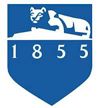White and Dere, 2014
EP13E-06 Rates of tree throw in Appalachian shale landscapes
Timothy White and Ashlee Dere (2014)
2014 AGU Annual Fall Meeting, San Francisco, CA, Dec 15-19th
-
National, Shale Hills, INVESTIGATOR, STAFF
-
Shale Hills, INVESTIGATOR, COLLABORATOR
Abstract
Arborturbation, or tree throw, the upheaval of soil and sometimes bedrock in the root mass of a fallen tree, has been suggested to be a major process in the overturn and downslope transport of soil and shallow bedrock in mountainous regions. Reported here is a quantification of the effects of tree throw from six sites in the eastern U.S. from New York to Alabama. The study included field measurements of individual tree throws within a 120-meter diameter search area centered on ridge tops on the Silurian Rose Hill Formation shale and coeval strata of similar composition. The following observations were made for each tree throw at each study site: GPS location, tree girth, relative tree age, tree type, dimensions of pit, azimuth of fall, and slope and azimuth of maximum slope. These observations allowed quantification of the volume and distance of transport of sediment per event, and the number of events/area/time. The sediment fluxes reported here range from 1.8 X 10-5 m2/m/y to 2.1 X 10-4 m2/m/y. The observations double in number and verify formulations of sediment flux due to tree throw cited in the literature., and exceed by several orders of magnitude values for sediment flux rate by soil creep on slopes. Slope and prevailing wind direction, while important in places, did not control the majority of arborturbation events in this study. The total number of tree throws is observed to decrease while sediment flux by tree throw generally increases from north to south along the study transect. Larger trees evacuate larger pits, but interestingly there is no observed increase in the average girth of trees in the study area to account for the discrepancy between number of tree throws and sediment flux. However, the depth to a root limiting layer and the distance from the center of a root wad to the center of an excavated pit increases from north to south – deeper roots excavate more soil and deeper soils generally exist in warmer climates.
Citation
Timothy White and Ashlee Dere (2014): EP13E-06 Rates of tree throw in Appalachian shale landscapes . 2014 AGU Annual Fall Meeting, San Francisco, CA, Dec 15-19th.
 This Paper/Book acknowledges NSF CZO grant support.
This Paper/Book acknowledges NSF CZO grant support.
Explore Further



